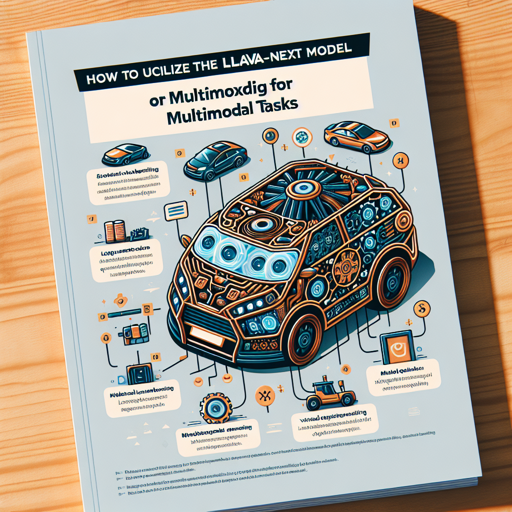In the fast-evolving field of artificial intelligence, multimodal models like LLaVa-Next are proving to be game-changers. They mix the strengths of large language models with visual inputs. This guide will walk you through using the LLaVa-Next model and optimizing it for various tasks.
Understanding LLaVa-Next
The LLaVa-Next model is an upgraded version of LLaVa 1.6, incorporating a stronger language backbone and a diverse dataset. Think of it as a high-performance vehicle that has been upgraded with a bigger engine (the stronger language backbone) and better fuel (the diverse data). It’s designed for tasks such as image captioning and visual question answering.
Intended Uses
- Image Captioning
- Visual Question Answering
- Multimodal Chatbot Applications
For more models specific to your tasks, visit the model hub.
How to Use LLaVa-Next
The following code snippet demonstrates loading the LLaVa-Next model and using it for multimodal tasks:
from transformers import LlavaNextProcessor, LlavaNextForConditionalGeneration
import torch
from PIL import Image
import requests
processor = LlavaNextProcessor.from_pretrained("llava-hf/llama3-llava-next-8b-hf")
model = LlavaNextForConditionalGeneration.from_pretrained("llava-hf/llama3-llava-next-8b-hf", torch_dtype=torch.float16, device_map="auto")
# Prepare image and text prompt
url = "https://github.com/haotian-liu/LLaVA/blob/1a91fc274d7c35a9b50b3cb29c4247ae5837ce39/images/llava_v1_5_radar.jpg?raw=true"
image = Image.open(requests.get(url, stream=True).raw)
# Define a chat history
conversation = [
{
"role": "user",
"content": [
{"type": "text", "text": "What is shown in this image?"},
{"type": "image"},
],
},
]
prompt = processor.apply_chat_template(conversation, add_generation_prompt=True)
inputs = processor(prompt, image, return_tensors="pt").to(model.device)
# Autoregressively complete prompt
output = model.generate(**inputs, max_new_tokens=100)
print(processor.decode(output[0], skip_special_tokens=True))Understanding the Code
Imagine you’re hosting a dinner party. First, you set the table (loading the model), gather ingredients (preparing inputs), and then cook the food (generating text) based on the guests’ desires (the prompts). This code follows a similar recipe:
-
Set the Table: Load the
LlavaNextProcessorandLlavaNextForConditionalGeneration, just like arranging plates and utensils for dinner. - Gather Ingredients: Fetch an image using its URL and create a conversation that acts as your dinner guest’s requests.
- Cooking the Food: Use the model to generate a response based on the inputs you’ve prepared.
Model Optimization
To speed up the generation process and handle memory better, you can optimize the model using 4-bit quantization and flash attention.
Optimize with 4-Bit Quantization
First, ensure you have the bitsandbytes library installed:
pip install bitsandbytesThen modify your model loading line as follows:
model = LlavaNextForConditionalGeneration.from_pretrained(
model_id,
torch_dtype=torch.float16,
low_cpu_mem_usage=True,
load_in_4bit=True
)Use Flash Attention 2
For enhanced performance, install flash-attn as per its official repository. Then update your code snippet as follows:
model = LlavaNextForConditionalGeneration.from_pretrained(
model_id,
torch_dtype=torch.float16,
low_cpu_mem_usage=True,
use_flash_attention_2=True
).to(0)Troubleshooting
If you encounter any issues while using LLaVa-Next, consider the following steps:
- Ensure you have the necessary libraries installed, especially
transformersandtorch. - Check your CUDA compatibility if you are using GPU settings.
- If the model fails to load, confirm your internet connection and the validity of model URLs.
For more insights, updates, or to collaborate on AI development projects, stay connected with fxis.ai.
Conclusion
Multimodal capabilities like those found in LLaVa-Next open doors to an exciting frontier in AI. By following this guide and optimizing your setup, you can harness its potential for various applications.
At fxis.ai, we believe that such advancements are crucial for the future of AI, as they enable more comprehensive and effective solutions. Our team is continually exploring new methodologies to push the envelope in artificial intelligence, ensuring that our clients benefit from the latest technological innovations.

